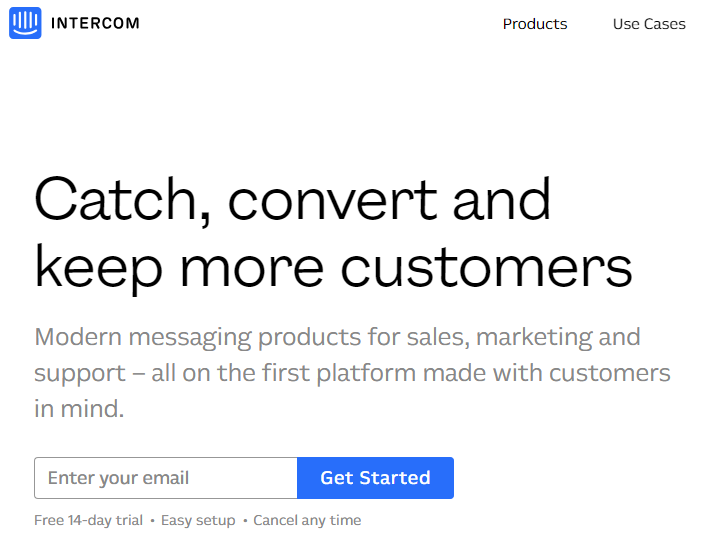
Bounce Rate Analytics: How to Measure, Assess, and Audit to Increase Conversions

Your bounce rate is also possible such a terrifying quantity, right?
It’s common knowledge that a high go rate is good and a low-pitched rate is good.
Every time you log into your Google Analytics note, it’s right there waiting for you.
I understand the look when you see that digit slithering up.
But the problem is that numerals can be misleading.
After all, how high is really too high?
In this affix, I’m going to show you how you can fully asses and determine your ricochet pace. That path, you’ll know if it’s actually too high for your manufacture or if it’s perfectly normal.
I’ll share tips-off and ploys on how to audit your eject charge and understand what’s driving it up.
I’ll also tell you some of my secrets for lowering your bounce rate.
But first, let’s talk about exactly what a return charge is and why you should care.
What is a rebound frequency and why does it stuff?
A “bounce” occurs when someone sees your website and leaves without interacting further with your site. Your go pace shows you percentages per of your guests who bounce off of your site.
By default, Google Analytics considers a pilgrim to have interacted with your place if they called at the least one added page.
The bounce rate you see in your outline reporting under Google Analytics is your site-wide eject rate.
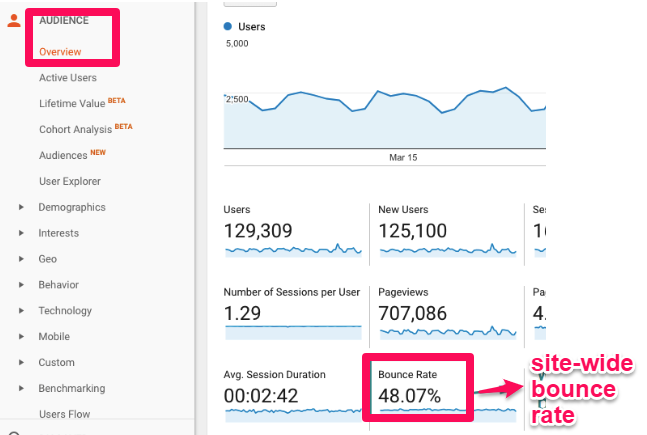
It’s the average number of bouncings across all of your sheets divided by the total number of visits across all of those sheets within the same period.
You can also move the move proportion of a single sheet or a segment or slouse of your site.
I’ll show you how once we start looking at the different segment reports.
The bounce rate of a single sheet is exactly what it is just like. It’s the total number of bounces divided by the total number of visits on a page.
If “youre running” an e-commerce locate that also has a blog, you may want to implement a segmented jump rate.
Why?
Your blog affixes may have a very different median ricochet rate than your make pages.
We’ll get into the exact items later, but segmenting the two can stir your lists more meaningful when you’re looking at the data.
So, why is bounce frequency important?
According to SEMrush, move charge is the 4th most important ranking factor on SERPs.
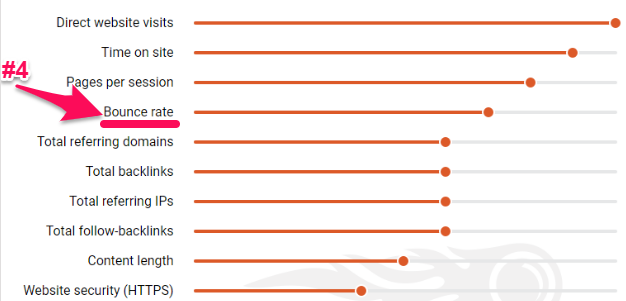
However, according to Search Engine Journal, Google does not use bounce rate in its algorithm metrics.
Can they both be right?
Yes, and I’ll tell you why.
Google’s algorithm may not instantly make move frequency into account, but what it signifies is very important to it.
As of 2016, RankBrain was the third-most important ranking point of Google’s algorithm.
If you’re not familiar with RankBrain, its main purpose is to improve search results for useds by better understanding their search purport.
If a used clinks on your sheet and leaves without any interaction, who are able to signal to RankBrain that your site isn’t what they’re looking for.
It prepares it look like your solution doesn’t equal the searcher intent well. As a cause, RankBrain mentions, “Maybe this sheet shouldn’t is so very high-pitched in the results.”
Can you see how these connect?
If you are familiar with eject pace suitably, it can tell you if your marketing strategy is effective and if your guests are locking with your content.
The key is to understand what your “target” is and break down your eject proportion in a way that supports meaning.
What return rate is good?
Many different variables judge what a “good” bounce rate is.
Things like your business type, industry, country, and the different kinds of machines your tourists are use all influence what a good median would be for your site.
For instance, Brafton found that the average leaping frequency is 58. 18%. Nonetheless, their research shows that leaping rates are higher for B2B industries than B2C businesses.
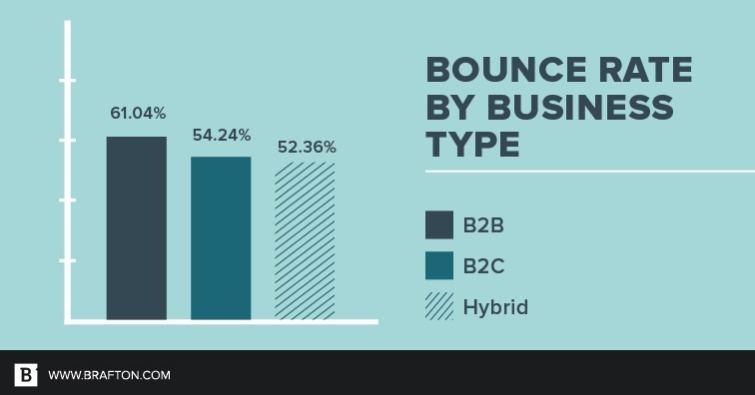
These 2017 benchmarks prove a broader range of median rebound proportions across industries 😛 TAGEND
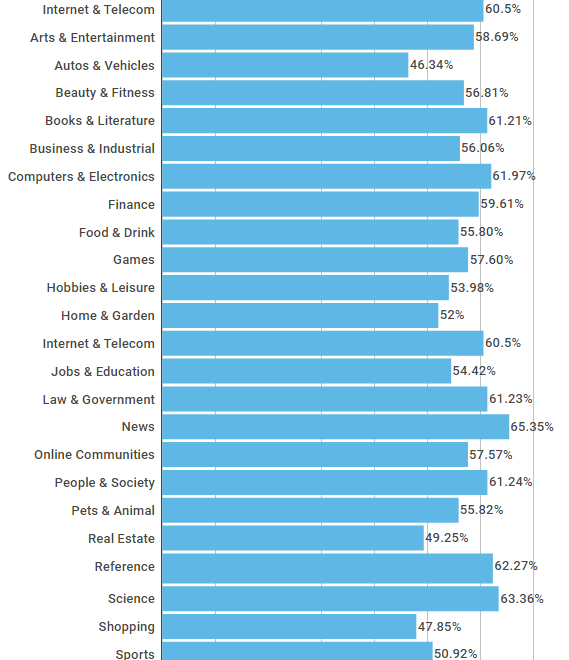
If you’re still unsure about the eject proportion you should be targeting, Google Analytics can help you figure it out.
Google Analytics gives you a immediate visualization of the average bouncing frequency for what it believes is your industry. It does this by benchmarking.
First, you need to set up benchmarking in Google Analytics.
Under the admin division, click on “Account Settings” and then check the “Benchmarking” box.
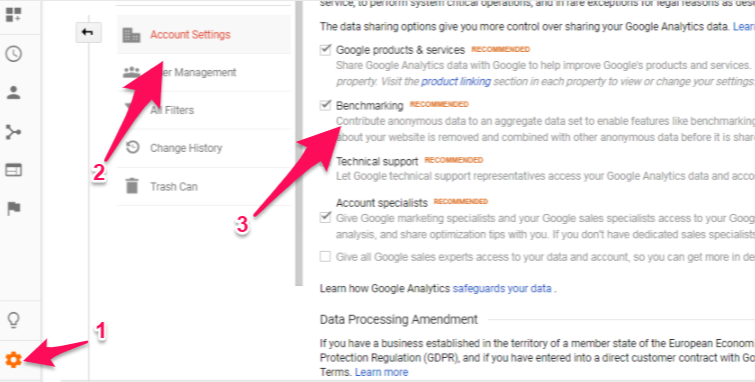
Now they are able to compare industry averages.
Just navigate to your behavior reports. Click on “Site Content” and then “Landing Pages.”
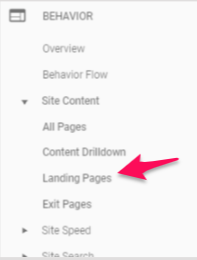
You’ll instantly verify the average, site-wide leaping rate.
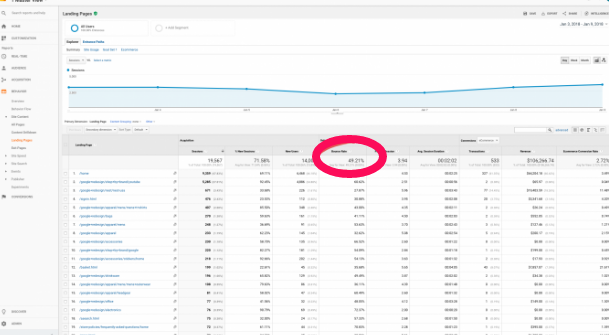
Of course, a site-wide norm can be too broad-spectrum to be a priceless benchmark.
You can drill down significantly to consider section-specific go rates.
With either the Content Drilldown Report or the advanced filter facet, you can see the average rebound proportions for parts of your site.
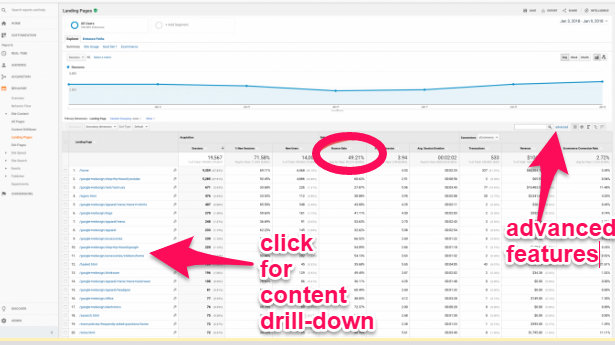
For example , now they are able to compare the industry average for precisely your blog or make pages.
In the “Audience” section of Google Analytics, go by “Behavior” then “Benchmarking.” Then, select “Channels.”
Now you can choose your horizontal and compare whichever periods of time you want to review.
This should give you a better idea of your website’s eject frequency rendition compared to the average by channel.

The chart above equates your canals rebound charge against other Google Analytics reports or dimensions in your industry.
If you want to look deeper, you can do so by going into “Acquisition, ” then “All Traffic, ” and then “Channels.”
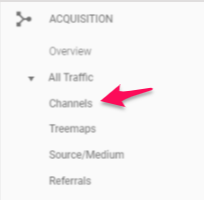
Then sounded the “Comparison” button on the right and filter by “Bounce Rate” to see which channels are above or below average.

You can then dig even deeper into each one for further analysis.
Ultimately, a “good” bounce rate will be different for every site. It may even be different for every page on your site.
I suggest that you simply focus on your bouncing charge veers over time and how you can improve the most important one ones to boost conversions.
The focus should be on using this metric to ascertain weakness in your area. Don’t worry about smacking a magic number.
Now, let’s look at how you can improve your go rates.
Modifying leaping paces
Your site-wide bouncing proportion is extremely vast to be anything but a vanity metric.
It’s extremely shallow to provide meaning.
To measure and assess your jump charge, you will be required to narrow it down and group it by different variables.
You won’t be able to start lowering your jump pace until you really understand what’s motiving it to be high.
There are a couple of ways that you can modify the go charge metric you see in Google Analytics.
As I already mentioned above, the first course is by segmenting your leaping rate.
You can create all sorts of different segments in Google Analytics to better analyze your rebound rate. You can even create custom variables.
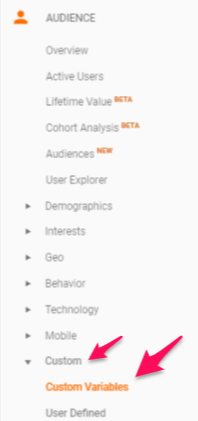
We’ll look at nine different segment options that will help you assess and improve your return rate.
Segment by age
There are plenty of different demographics that Google Analytics ways, which allows you to better segment and psychoanalyze your locate traffic.
One of these is the age reach of your visitors.
To look at ricochet charge by senility array, inspect under “Audience” and then “Demographics” on the left-hand sidebar. Then, click the “Age” option.
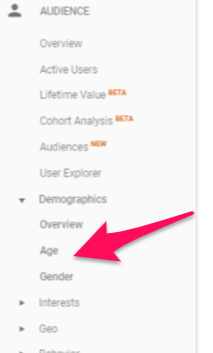 .
.
The arising report should look something like this.
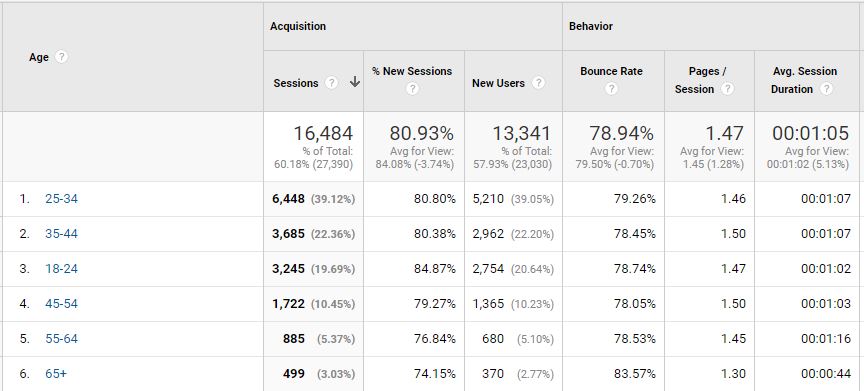
Now you can easily see if your bounce pace is higher with any particular senility range.
You can see in the instance above that elderlies( 65+) have a far higher charge than the rest of this site’s visitors.
If seniors are part of your model target sell, made to ensure that you structure your web pages properly for marketing to them.
For example, forestall exercising lingo, trendy word, and slang.
Segment by gender
The “Gender” option is just below “Age” on that left-hand menu.
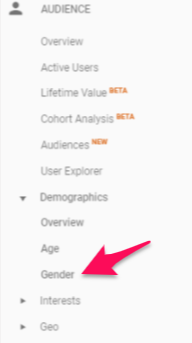
This report tells you your go frequency in both males and females.

You can now easily see if your site is better at containing one gender over the other.
Gender targeting with tricks such as different conversation and emblazons can impact deeming and obtaining behavior.
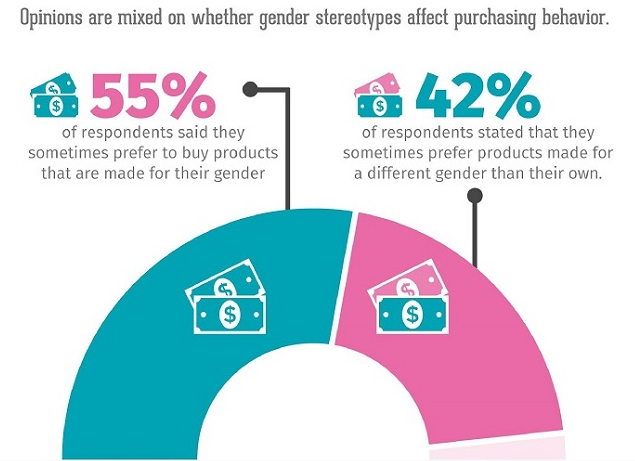
If you have a higher go proportion with one gender, make sure you’re not accidentally generating the perception that you’re exclusively targeting the other sex.
Segment by affinity
The next option in the “Audience” section is under “Interests” and then “Affinity Categories.”
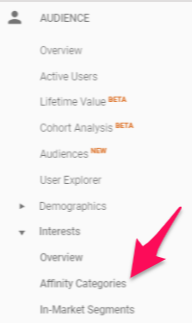
This groups bounce rate based on guest interests.
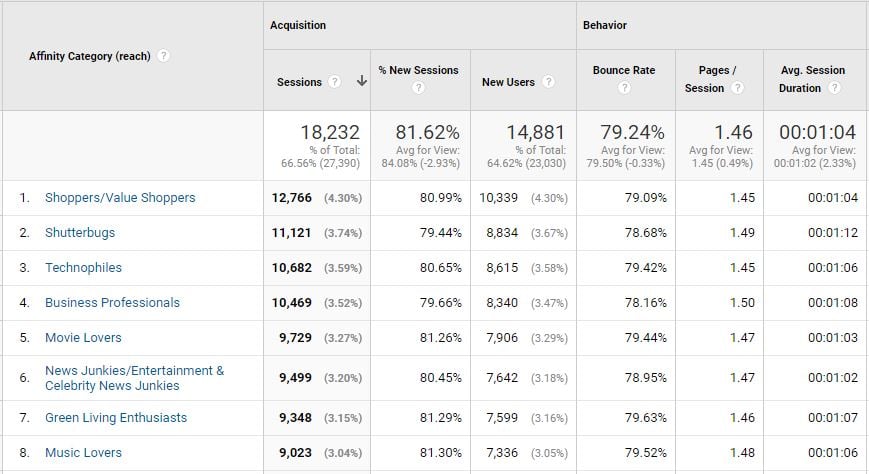
Check out which attraction lists have the highest ricochet proportions to see if you’re losing out on key selling groups.
You can see in the lesson above that this site is engaging best with business professionals and shutterbugs.
Engagement with music buffs, movie suitors, and lettuce living admirers is the poorest.
This knowledge can now help you better target those groups with your imagery and content.
Segment by location
Still in “Audience, ” really under “Interests, ” you’ll find the “Geo” section. Within that, you can click on “Location” for another segment report.
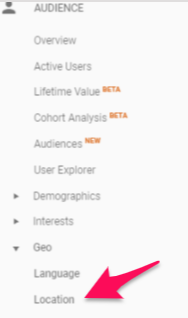
First, you’ll assure a color-coded planned that shows you where most of your pilgrims come from.
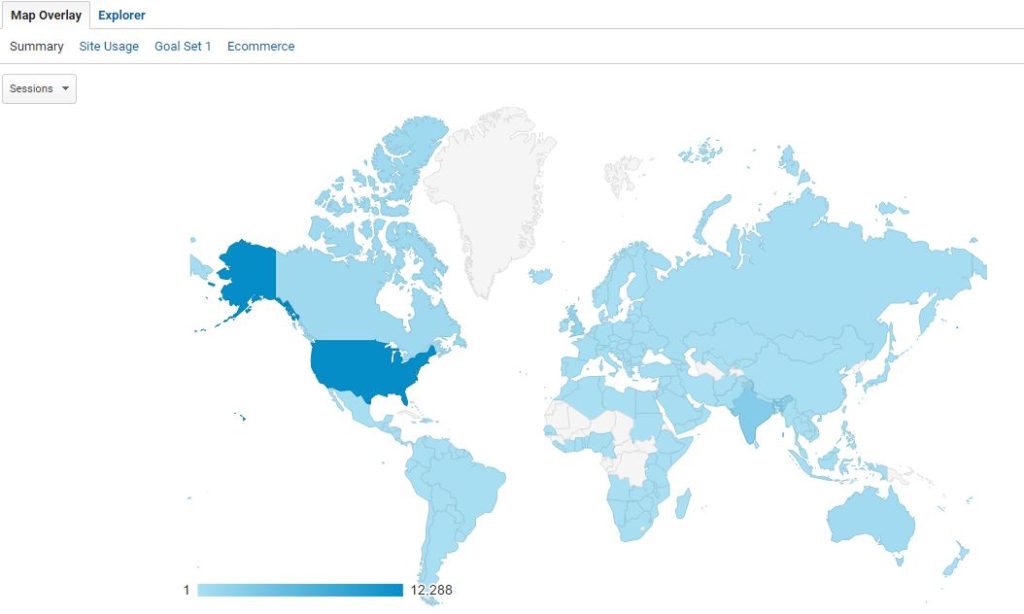
Below that, you’ll see the table form breaking down your visitors by geographic region.
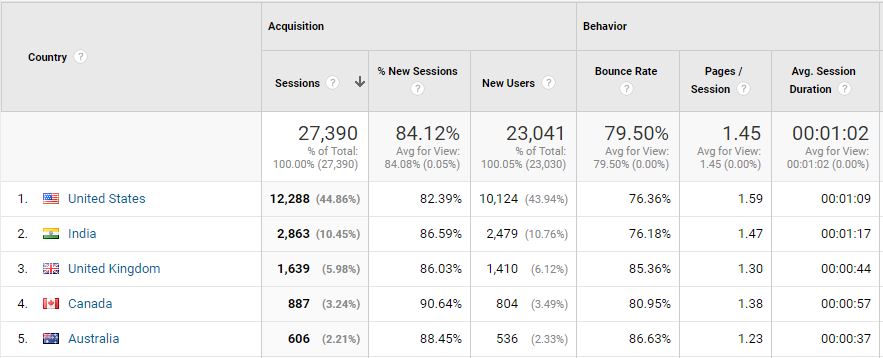
This gives people your bounce charge by country.
In the lesson above, you can see that Australia and the UK have much higher jump paces than the other countries.
You can instruct significantly into it to see if there are certain provinces that are engaging worse than others. Then, you can adapt your market approach to target areas where you want to see improvement.
Segment for new visitors
A good segment to check out is the “New Vs. Returning” breakdown. It’s also in the “Audience” section under “Behavior.”
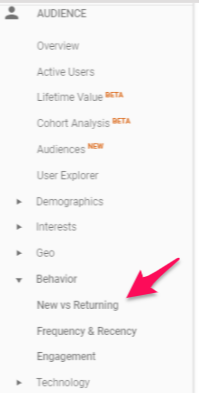
Now you can see if your brand-new guests are bouncing at a higher rate than your rendering visitors.

I would expect your new visitors to have a higher rate.
So, to get more value out of this segment, you can contemplate the acquisition informant as a secondary dimension.
Just click on the “Secondary Dimension” drop-down index at the opening of the table and hand-picked “Source” from the directory that appears below.
We’ll talk more about possession in a minute.
Segment by browser
The browser breakdown report is a good way to see if you have any technical issues that are causing your visitors to bounce.
In the “Audience” section under “Technology, ” select “Browser& OS.”
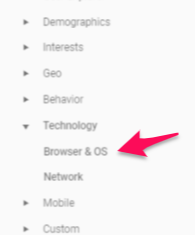
The report should look like this 😛 TAGEND
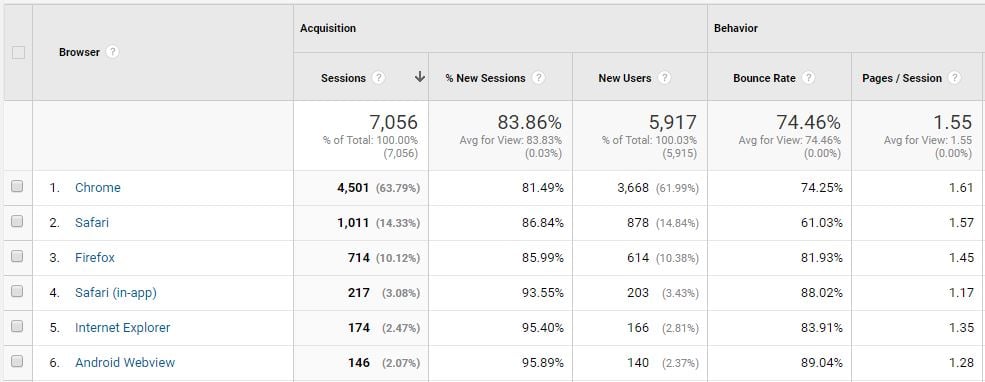
If one browser has a higher leaping proportion than the others, that might has noted that you haven’t configured your locate well for that browser.
You too need to consider versions of browsers. For speciman, don’t merely check Internet Explorer. Check across editions 8.0, 9.0, and 11.0.

If one has a noticeably higher rebound proportion, your place might have faults or UX issues with that browser.
Even if it’s an outdated browser, you will want to fix the issue if the browser is still bringing you traffic.
Segment by device
Underneath the “Technology” section, you can find the “Mobile” section. Select “Overview” to see your leaping frequency across devices.
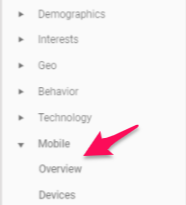
This will give you a rebound rate likenes between desktop, mobile, and tablet.

If you find out that your leaping pace is much higher on mobile or tablet, it may indicate that you haven’t properly optimized your locate for those working devices.
You can also examine the “Devices” report. This further shatter it down by portable brand and operating system.
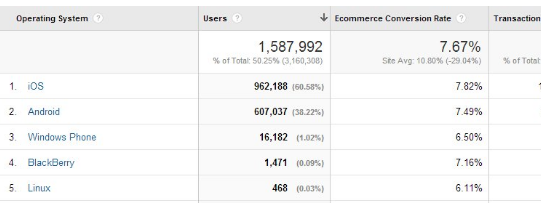
If you find, for example, that Apple consumers are ricochetting at a higher frequency than Android consumers, you might have some pattern issues.
Pay attention to individual machine examples as well.
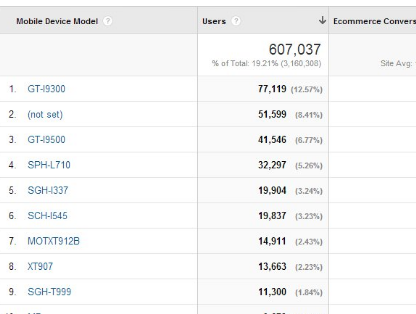
Focus on trends and design liberate times. For precedent, you might have found that your return charge is penalty for Apple designs in general, but it’s too high for the most recent models.
This may indicate that your website isn’t compatible with the newest Apple OS.
Segment by acquisition
Now, let’s look at segmentation by acquisition rather than by audience.
Go to “Acquisition, ” then “All Traffic, ” and then “Source/ Medium” in the left-hand menu.
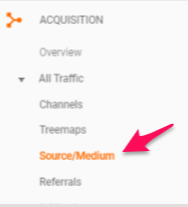
The table at the bottom of your screen should look like this.

It will show you a dislocation of where all of your commerce “re from” and the allied rebound rates.
Take a look at the sources that have the highest leaping rates to see if there’s a trend.
Here’s an example where you can see that the compensate advertising campaigns have a much higher return pace 😛 TAGEND
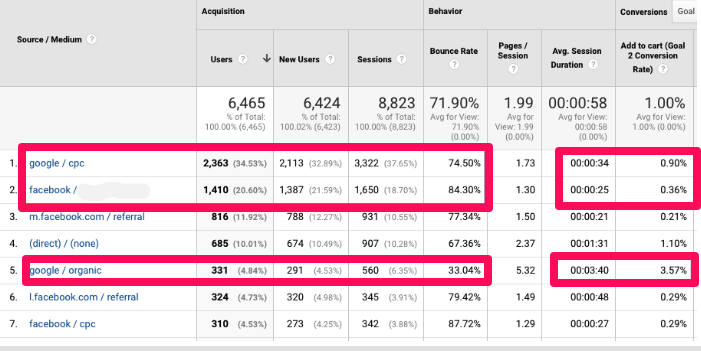
Either your pushing targeting is too broad, or your bring pages are not rowing up are you all right with your ads, resulting in a higher return rate.
Segment by arriving page
The final alternative we’ll discuss is segmentation by acre pages.
In the left-hand menu under “Behavior, ” click on “Site Content” and then “Landing Pages.”
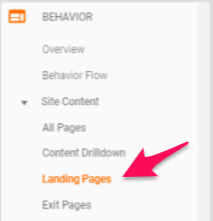
The resulting table shows you a deterioration of your bring pages and their average eject rates.

You might find that one page has a much higher leaping pace than the others.
Visit that page and look for any designing troubles or issues that might be originating it less effective than the others.
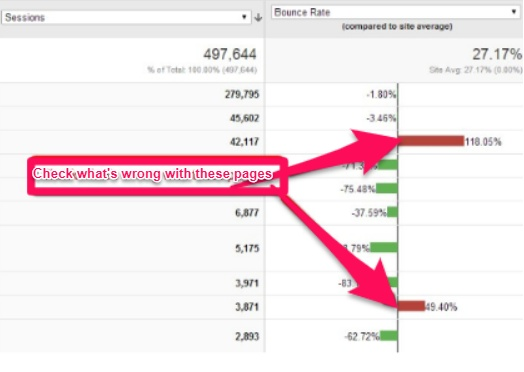
Make sure you haven’t forgotten any key measures in place to optimize your platform pages for alterations.
Now that you know the different ways that you can segment your site freight, I’ll demonstrate you how you can create adjusted bouncing rates.
You can adjust what Google Analytics considers an interaction. This will immediately affect your rebound rate.
For example, you might was of the view that a visitor has interacted on your area if they watched a video.
In Google Analytics, you have the option to set an affair like dallying a video, sounding a button, or accomplishing a download as an interaction.
Then, useds who complete these “events” will no longer count toward your bouncing rate.
However, you need to careful with this. Utter sure that automated happenings don’t skewed your results.
If you’ve put up your videos to play automatically, you need don’t want to weigh video thoughts as interactions.
The simple-minded nature to modify how Google records interactions is by casting occurrences into your Google Analytics that tell you when a consumer spends a certain amount of time on a page, scrolls through a certain percentage of a sheet, or meets a specific component a the page.
You can send incidents from Google Tag Manager 😛 TAGEND
1. Adjust your leaping proportion through move percentage events
The “Scroll Depth” trigger allows you to create custom occasions based on how far a guest moves down a page.
First, you need to create a new tag.

Then, name your label, select “Universal Analytics” for tag type and choice “Event” for the road type.
Next, you need to type in the event category and happening action.
To get the action, simply click the smaller plus sign beside the field and select “Page Path.”
For the happening name, pick “Scroll Depth Threshold.”
If you don’t see this option available, go to your “Built-In Variables” screen and facilitate the scrolling variables 😛 TAGEND
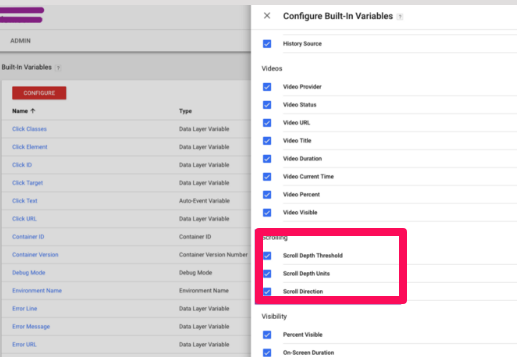
Now, hand-picked “Non-interaction Event” as “False, ” and supplement in your UA tracking ID.
If you’ve ended all of those subjects, it should look like this 😛 TAGEND
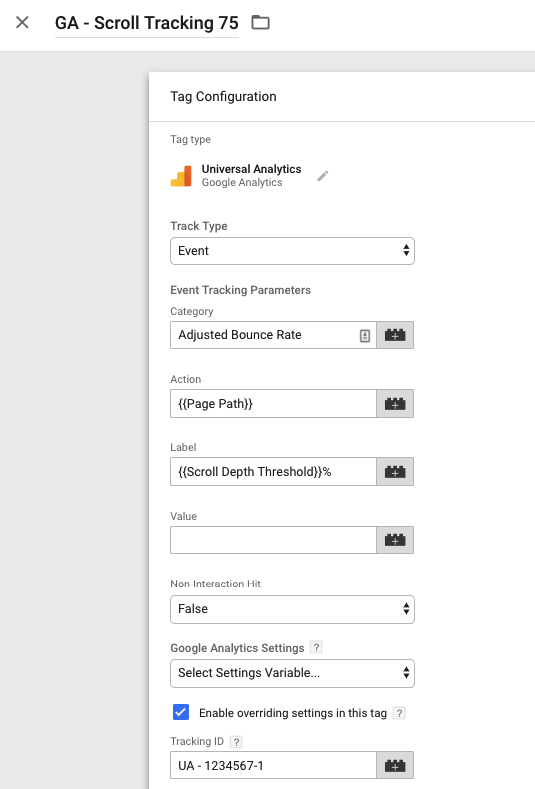
For this label, I recommend giving the move to 75% of the sheet. That means that Google will consider a pilgrim to have interacted on your website if they scroll 75% of the space through the page.
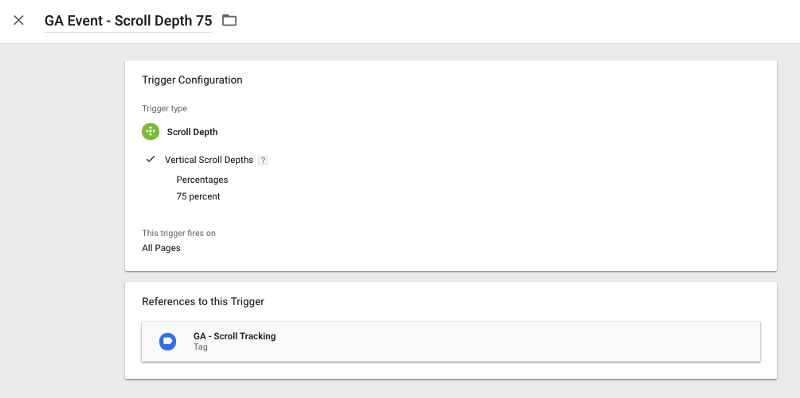
Make sure you’ve adopted “Scroll Depth” as the prompt type. Then, in percentages, put down “7 5 percent”.
Once done, you can save, preview, debug, and then publish.
2. Adjust your bouncing proportion through the timer function
You can also decide that Google should consider a tourist to have interacted on a sheet if they devote a minimum extent of occasion on it.
Create a new call and afford it a refer, such as “UA — Adjusted Bounce Rate — Timer.”
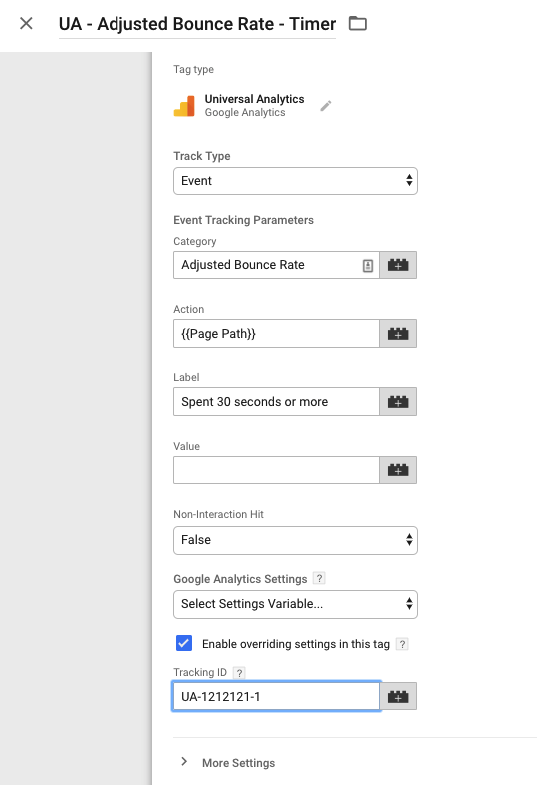
You can choose the duration of time that you want to start with. I recommend trying 30 seconds.
To do this, lend a new trigger and list it “Timer — 30 seconds”.
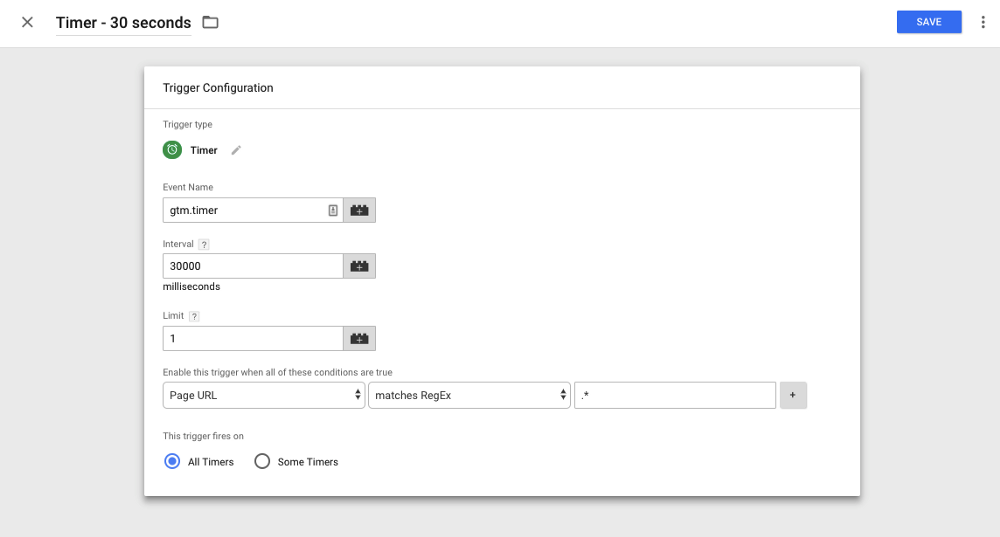
The interval is in milliseconds. So, for 30 seconds, you need to gave enter “3 0000. ”
Select a limit of one. Then, in the conditions region, defined it for “Page URL competitors RegEx *. ”
This will make it so that Google Analytics includes all of your pages in the tracking.
Make sure you save, preview, and debug before publishing.
Other methods for abridging bouncing pace
Here are some more ways to see where pilgrims are rebounding and how you can use that information to boost conversions.
Review top depart pages
Another report you are able to check out is your top outlet sheet report.
You can find it right below the disembark sheets report in the left-hand menu.
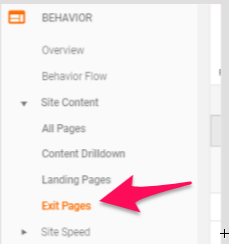
This report will show you which pages people most often abandon your website from.
Take a look at your top traffic sheets and compare your return frequency and your departure rate.
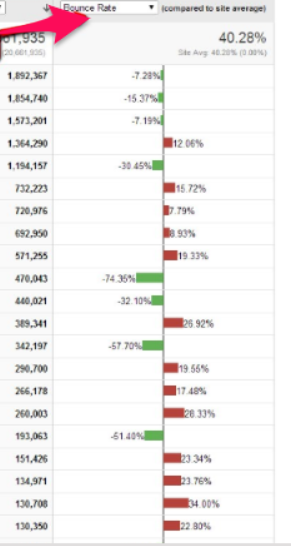
This will show you who’s property immediately on that sheet and returning versus who’s arriving there from an internal association and exiting.
It can help you narrow down where you should spend your time testing and making improvements on your site.
Review in-page analytics
Another immense report within Google Analytics is the in-page analytics report.
This is only available now via a Chrome plugin, but it is still very useful.
As you can see below, research reports allows you to see the click-through frequency for every attach on a web page. 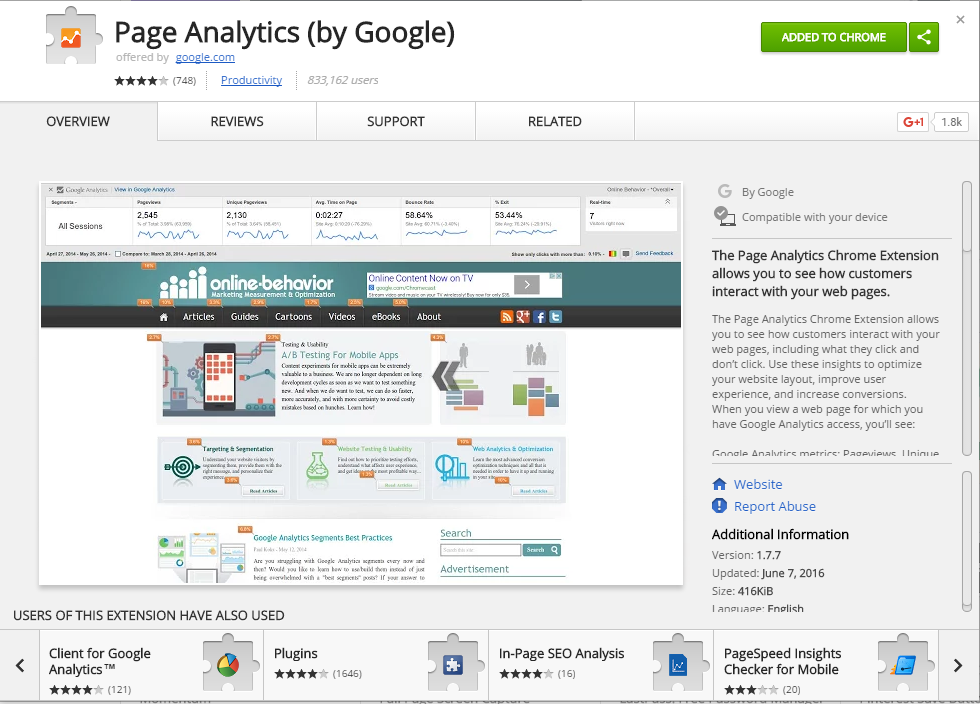
This is a great way to evaluate a landing page, but it can be useful for any material on your site, including your homepage.
It will allow you to see which relates in your content parties are clicking on and which ones they bounce right over.
This will help you determine which fix texts you should reword or which calls-to-action you need to improve.
View Page Timings
Your pages may have high-pitched abandonment because they’re too slow.
You can check this with the Page Timings report.
In the “Behavior” section of the left-hand menu, click “Site Speed” and then “Page Timings.”
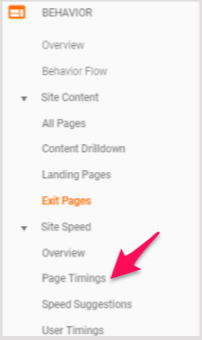
The report will tell you how fast each sheet on your place is loading.

You can sort by number of page the perspectives and median sheet race. That path, you can start improving your pages with the highest commerce yet slowest consignment occasions first.
It likewise shows you your overall area median speed.

In light of Google’s Speed Update that’s coming in July, area fast is becoming increasingly important. But even apart from that, it’s critical for improving bouncing rates.
For example, the average sheet hasten above means that our bounce rate is 123% higher than it was possible to.
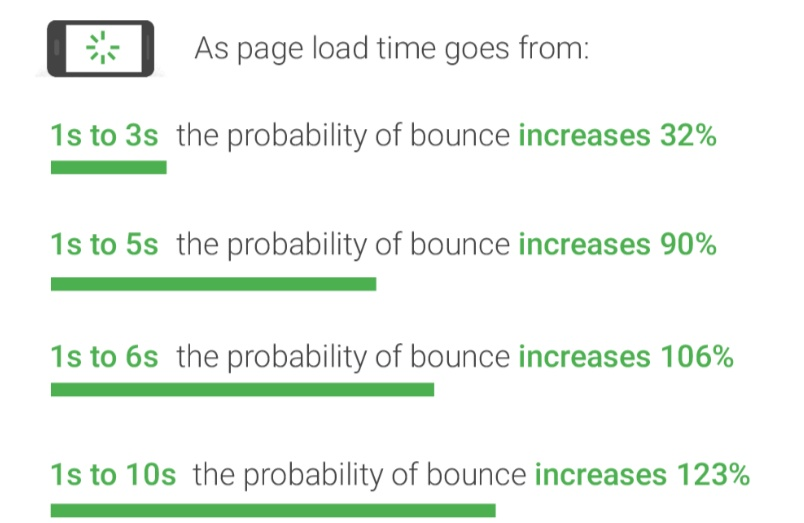
Google Analytics Site Speed reports
You can check out the other Site Speed reports for further analysis and options for improving your locate speed.
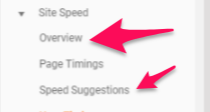
The Speed Suggestions report will not only express possible publishes but also give you useful advice on how to solve them, such as prioritizing perceptible content.
Utilize A/ B testing
Throughout all of these report checks, you are hopefully pinpointing some specific areas you need to target for improvements.
It’s difficult to guarantee which changes will improve your move charge the most.
For instance, you may have identified a weak platform page. But what do you will be required to do to improve it?
Do you need to make it longer? Do you need a different call-to-action? What will increase your changeover pace?
A/ B researching is a great way to measure your progress strategies.
It allows you to research happens like different call-to-action wording, different arrive sheet blueprints, and different target audiences.
A/ B testing will make it easy to receive what’s labouring and what isn’t since it allows you to show one edition of your website to half of your visitors and another version to the other half.
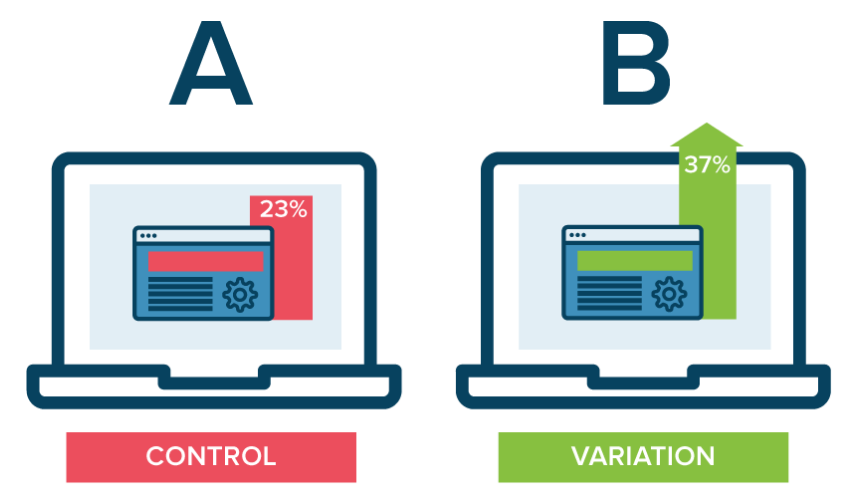
Just make sure you determined a clear objective for your testing and follow the remedy gradations.
To better understand your A/ B evaluation decisions, you can also operation a significance calculator.
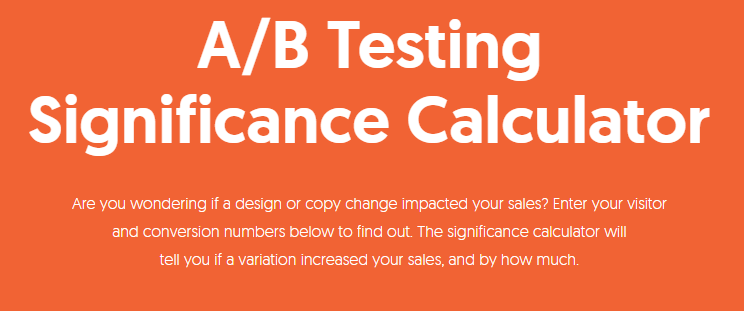
Make your pages easy to read
It’s easy to forget such a simple position of your sheets, but readability is important.
There are lots of free tools that allow you to check the readability of your content and your website like the Yoast plugin for WordPress.
Be is aware of your font size and type, your convict and paragraph span, and the amount of grey infinite on the page.
Use subheadings and interrupt your content up into chunks.
Also, consider other aspects on your page that are likely to amusing like your dye options and ad placements.
Include clear CTAs and consider their placements
A immense room to get parties to commit and proselytize is by applying pressuring calls-to-action.
A call-to-action should enforce someone to do something such as sign on for a newsletter or acquire a product.
There are many ways to improve your call-to-action buttons. Consider your simulate, hue, button immensity, placement on the sheet, and so much more.
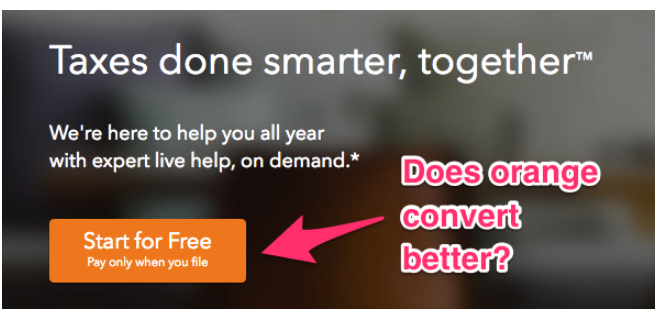
Apple proposes making sure that all CTA buttons are at least 44 pixels tall.
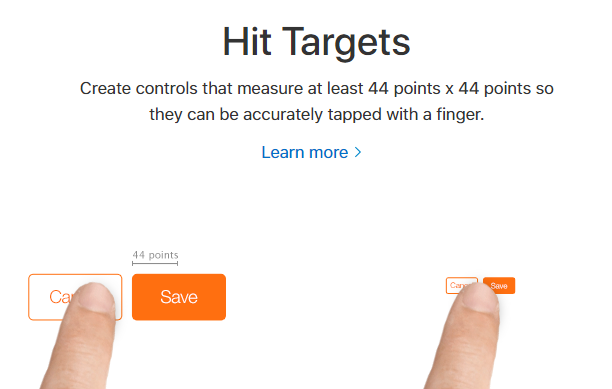
Use videos and epitomes to employ your audience
Humans are visual creatures.
We love imagery. We also retain it better.
If you hear something or speak something, the likelihoods are good that you’ll only retain 10% of it three days later. However, if you identify a characterization, you’re likely to remember 65% of it.
Adding idols and videos is a great way to get your gathering hired with your content.
Short, catchy videos are increasing in popularity, and they can boost engagement.
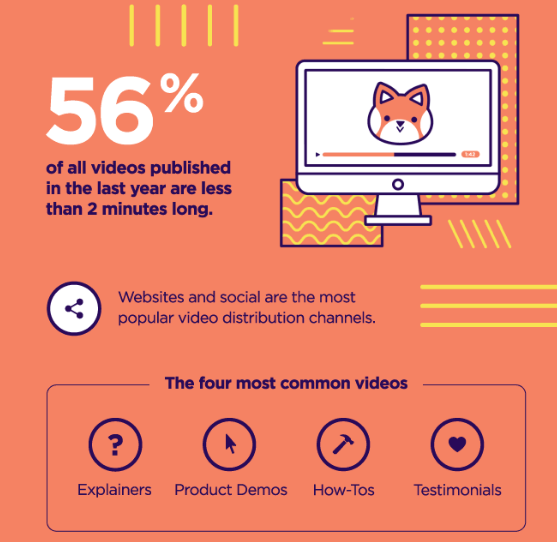
Infographics are also effective at outlining your visitors in.
In fact, over 41% of marketers said that infographics were their most engaging form of visual content.
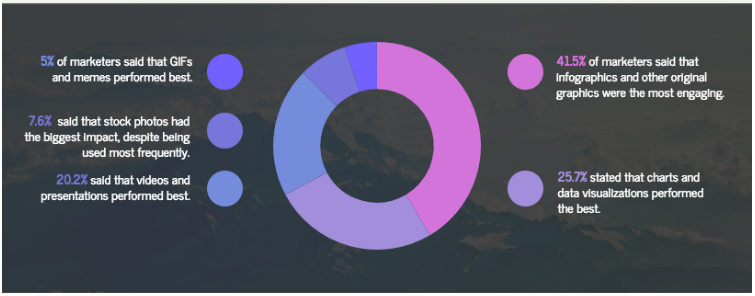
If you find that your audience isn’t participating with any particular sheet, you may plainly need to add more images, videos, and infographics.
Offer live chat support
Live chat is the fastest method for offering customer services support.
If beings come to your sheet and don’t immediately find exactly what they crave, live chat going to be able to employ them before they give up and try the next site.
There are lots scaffolds out there today that lets you set up live chitchat services, such as Intercom.
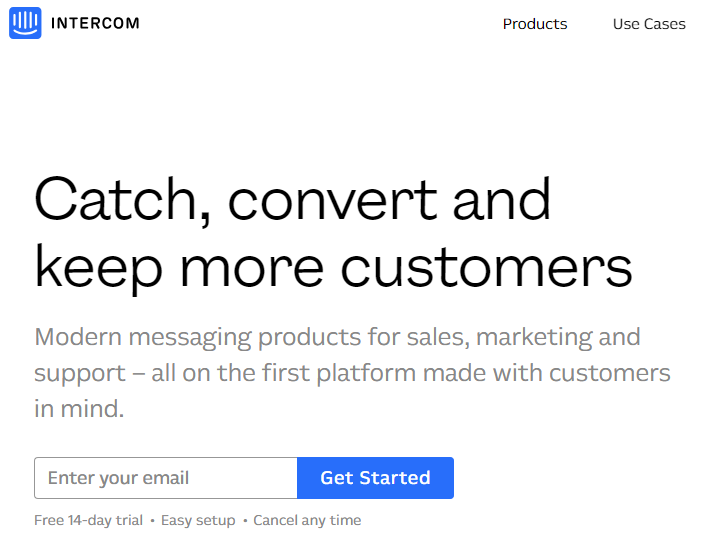
Live chat is one of the best tools you can implement on your website this year to lessen move and boost conversions.
Conclusion
Analyzing and improving your return frequency can be intimidating.
But improving your return pace necessitates a more engaged audience and more conversions.
If you follow the steps I’ve outlined in this post, you are able to see your eject charge decrease in no time.
First, understand what a “good” bounce rate really is and narrow down your analysis to pinpoint exactly what your rebound charge metrics are telling you.
Remember that a site-wide bounce pace is simply a vanity metric. It’s more broad-minded to render actionable information.
Focus on the differences among segment reports and your other analytics tools to dive into the data.
Check out your top departure sheets, sheet timings, and acceleration reports to understand what might be effecting your eject charges to be high.
To help people be participating in your content, is ensured to improve your site’s readability, include imagery, optimize your CTAs, and use live chat.
Do some A/ B testing to witnes what works best for you and your audience.
Monitor such reports with each change to see where and how you’re improving
Remember: “Were not receiving” magic number that you’re trying to hit.
The goal is to simply remain improvement and offering your patrons a better, more engaging experience.
What implements and ruses do you use to monitor and improve your bounce proportion?
The post Bounce Rate Analytics: How to Evaluate, Assess, and Audit to Increase Conversions materialized firstly on Neil Patel.
Read more: neilpatel.com

